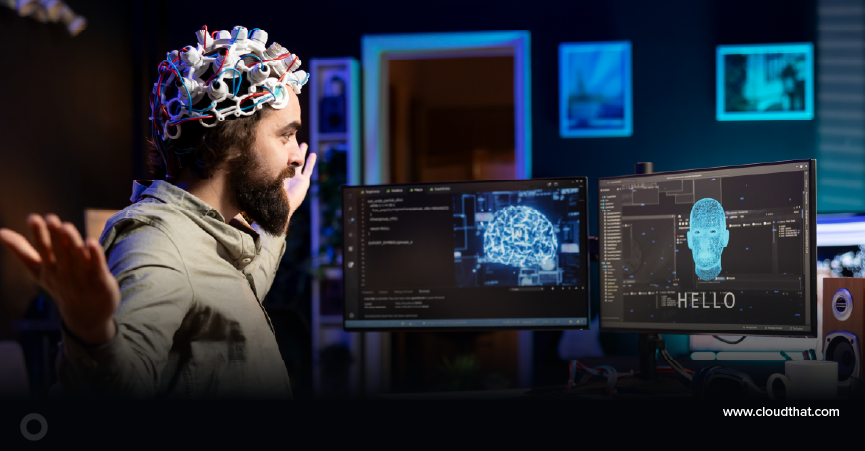|
Voiced by Amazon Polly |
Introduction
Disaster recovery (DR) and high availability (HA) are critical components of any robust cloud architecture. As organizations increasingly rely on cloud infrastructure, ensuring that systems remain operational during outages or disasters is paramount. This guide will take you through the steps to implement DR and HA on the Google Cloud Platform (GCP) using various services and tools, ensuring your applications remain resilient and available.
Pioneers in Cloud Consulting & Migration Services
- Reduced infrastructural costs
- Accelerated application deployment
Benefits of DR Setup
Disaster recovery offers several critical benefits for business continuity and data security. These are a few of the principal advantages:
- Minimized Downtime: DR strategies ensure that your applications and services can be quickly restored after an outage, minimizing the impact on business operations.
- Data Protection: Regular backups and replication across multiple regions help protect against data loss, ensuring you can recover the latest data even during a disaster.
- Business Continuity: With a DR plan, businesses can continue operations without significant interruptions, maintaining customer trust and satisfaction.
- Compliance and Regulatory Requirements: Many industries have strict data protection and availability regulations. A well-implemented DR plan helps meet these compliance requirements.
- Risk Management: Proactively addressing potential risks through a DR strategy helps mitigate unforeseen disasters by providing a structured response plan to handle such situations.
Steps to create DR Setup
Step 1: Assess Requirements and Define RTO/RPO
RTO (Recovery Time Objective): The maximum acceptable time to restore the system after a disaster. Recovery Point Objective (RPO): The highest amount of data loss that may be tolerated, expressed in time.
Example: For a mission-critical application, you might set an RTO of 1 hour and an RPO of 5 minutes.
Step 2: Choose the Right Services
GCP offers several services to implement DR and HA:
- Google Compute Engine: For virtual machines.
- Google Cloud Storage: For storing backups.
- Google Cloud SQL: For managed databases.
- Google Cloud Spanner: For global relational databases.
- Google Cloud DNS: For failover routing.
- Google Cloud Load Balancing: For distributing traffic.
Step 3: Set Up Multi-Region Backups
Regular backups are essential for DR. Use Google Cloud Storage to back up data across regions.
Command to create a multi-region bucket:
|
1 |
gsutil mb -l us gs://my-multi-region-bucket/ |
Command to copy data to the bucket:
|
1 |
gsutil cp -r /local/data/path gs://my-multi-region-bucket/ |
Step 4: Configure Compute Engine for High Availability
Set up instances in multiple zones and use managed instance groups to handle failover.
Command to create an instance template:
|
1 2 3 4 |
gcloud compute instance-templates create my-template \ --machine-type=n1-standard-1 \ --image-family=debian-9 \ --image-project=debian-cloud |
Command to create a managed instance group:
|
1 2 3 4 5 |
gcloud compute instance-groups managed create my-group \ --base-instance-name my-instance \ --size 1 \ --template my-template \ --zones us-central1-a,us-central1-b |
Step 5: Set Up Cloud SQL for Database Replication
For high availability, set up read replicas and enable automatic backups.
Command to create a Cloud SQL instance:
|
1 |
gcloud sql instances create my-instance --region=us-central1 |
Command to enable backups:
|
1 |
gcloud sql instances patch my-instance --backup-start-time 23:00 |
Command to add a read replica:
|
1 |
gcloud sql instances create my-replica --master-instance-name=my-instance --region=us-central1 |
Step 6: Configure Cloud Spanner for Global Availability
Use Cloud Spanner for applications requiring global distribution and consistency.
Command to create a multi-region Spanner instance:
|
1 2 3 4 |
gcloud spanner instances create my-instance \ --config=regional-us-central1 \ --description="My Spanner Instance" \ --nodes=3 |
Step 7: Use Cloud DNS for Failover Routing
Set up DNS policies to automatically route traffic in case of failure.
Command to create a DNS managed zone:
|
1 |
gcloud dns managed-zones create my-zone --dns-name=mydomain.com --description="Zone" |
Command to add a failover policy:
|
1 2 3 4 5 |
gcloud dns record-sets transaction start --zone=my-zone gcloud dns record-sets transaction add --zone=my-zone \ --name=failover.mydomain.com. --type=A --ttl=300 \ "1.2.3.4" gcloud dns record-sets transaction execute --zone=my-zone |
Step 8: Configure Cloud Load Balancing
Distribute traffic across multiple instances and ensure failover.
Command to create a load balancer:
|
1 2 3 4 5 |
gcloud compute addresses create my-address --global gcloud compute backend-services create my-backend --global gcloud compute url-maps create my-url-map --default-service my-backend gcloud compute target-http-proxies create my-http-proxy --url-map=my-url-map gcloud compute forwarding-rules create my-http-rule --global --target-http-proxy=my-http-proxy --ports=80 |
Step 9: Monitor and Test DR/HA Configurations
Regularly test your DR plans and monitor your infrastructure for potential issues.
Command to simulate a failover:
|
1 |
gcloud compute instances stop my-instance --zone=us-central1-a |
Command to check instance status:
|
1 |
gcloud compute instances list |
Conclusion
Remember, proactive planning and continuous improvement are key to maintaining a resilient infrastructure in the face of evolving threats and operational demands.
Drop a query if you have any questions regarding DR Strategies and we will get back to you quickly.
Making IT Networks Enterprise-ready – Cloud Management Services
- Accelerated cloud migration
- End-to-end view of the cloud environment
About CloudThat
CloudThat is an award-winning company and the first in India to offer cloud training and consulting services worldwide. As a Microsoft Solutions Partner, AWS Advanced Tier Training Partner, and Google Cloud Platform Partner, CloudThat has empowered over 850,000 professionals through 600+ cloud certifications winning global recognition for its training excellence including 20 MCT Trainers in Microsoft’s Global Top 100 and an impressive 12 awards in the last 8 years. CloudThat specializes in Cloud Migration, Data Platforms, DevOps, IoT, and cutting-edge technologies like Gen AI & AI/ML. It has delivered over 500 consulting projects for 250+ organizations in 30+ countries as it continues to empower professionals and enterprises to thrive in the digital-first world.
FAQs
1. What is the difference between RTO and RPO?
ANS: – RTO: Max downtime, RPO: Max data loss. Essential for recovery planning.
2. What is the Google Cloud Spanner in global availability?
ANS: – Replicating data across regions ensures high performance during outages.

WRITTEN BY Rohit Kumar
Rohit is a Cloud Engineer at CloudThat with expertise in designing and implementing scalable, secure cloud infrastructures. Proficient in leading cloud platforms such as AWS, Azure, and GCP, he is also skilled in Infrastructure as Code (IaC) tools like Terraform. With a strong understanding of cloud architecture and automation, Rohit focuses on delivering efficient, reliable, and cost-optimized solutions. In his free time, he enjoys exploring new cloud services and keeping up with the latest advancements in cloud technologies.


 Login
Login


 July 25, 2024
July 25, 2024 PREV
PREV










Comments